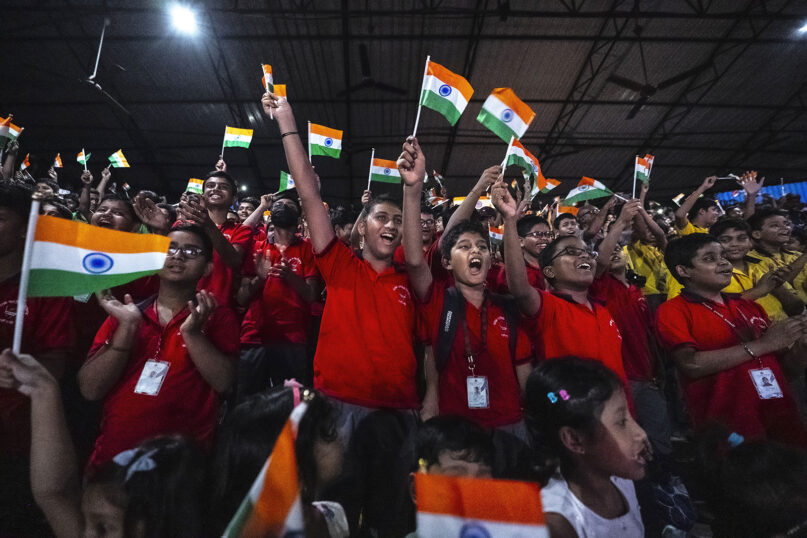(RNS) — The morning of January 28, 1986, a television set was wheeled into my elementary school classroom so that we could watch the Space Shuttle Challenger blast off into space. It was a special mission, with a crew that included Christa McAuliffe, the teacher from Concord, New Hampshire, who had been selected for NASA’s Teacher in Space project.
In the moments before the launch, I didn’t feel like the Hindu kid who was constantly picked on for his religion or told I was going to hell. I felt like I was a part of something bigger: I felt American.
When it became clear something was going wrong and my teacher turned off the TV, my classmates and I still thought we were all celebrating something together. I would only find out later, when I watched the evening news with my family, what had happened.
But my feelings of belonging show the incredible power of space exploration — its successes and its tragedies — to focus our national conscience in ways that politics, social issues or even sports cannot. The moon landing in 1969 momentarily brought together Americans reeling from urban racial unrest, the assassinations of Martin Luther King Jr. and Robert F. Kennedy the previous year and the increasing morass and human cost of Vietnam.
In the same way, the successful landing of India’s Chandrayaan-3 spacecraft on the moon’s unexplored south polar region on Wednesday (Aug. 23) — making India just the fourth country to reach the moon — fostered an immense sense of national pride, among Indians and among the Indian diaspora around the world.
India’s collective religiosity was on display in the days leading up to and in the moments after the culmination of the Chandrayaan-3 mission. Congregants at Hindu and Jain temples, mosques, Sikh gurdwaras and Christian churches prayed for a successful landing. Even as religious tensions in different parts of India continue to simmer and flare up, it was a remarkable example of unity. Indian Prime Minister Narendra Modi also hailed the landing as a moment for all Indians, a refrain echoed by his political rivals and critics.
But now comes the hard part. Can India take advantage of the enormous goodwill and inclusive nationalistic sentiment generated by the landing to reframe its future? India can’t launch moon rovers every year in hopes of glossing over its numerous tensions across religion, ideology and geography, any more than the United States could achieve lasting unity following Neil Armstrong and Buzz Aldrin’s walk on the moon 54 years ago.
Still, there’s an opportunity for Indians and their counterparts in the diaspora, regardless of their faith or their politics, to re-engage with one another, despite recent frictions. The pride that Hindus, Muslims, Jains, Christians, Buddhists and Sikhs feel at this shared accomplishment should make us all open to working together in the future.
There are also tangible steps to be taken. The Indian national and state governments could work to encourage careers in space among Indians of all faiths, leveraging the country’s diverse houses of worship to promote the growth of the space program as a common cause. The Indian Space Research Organization could and should organize visits of key members of the agency representing different faith identities, highlighting the heterogeneous stakeholders responsible for the country’s ambitions in space.
Modi, speaking after the Chandrayaan-3 landed, said the “success belongs to all of humanity,” adding, “I’m confident that all countries in the world, including those from the Global South, are capable of capturing success. We can all aspire to the moon and beyond.”
If we can turn the Chandrayaan mission into an opportunity for interfaith understanding, it won’t be remembered as one small step for India’s space program, but as a potentially giant leap for India’s efforts to enact a vision for a pluralistic and inclusive nationalism.





